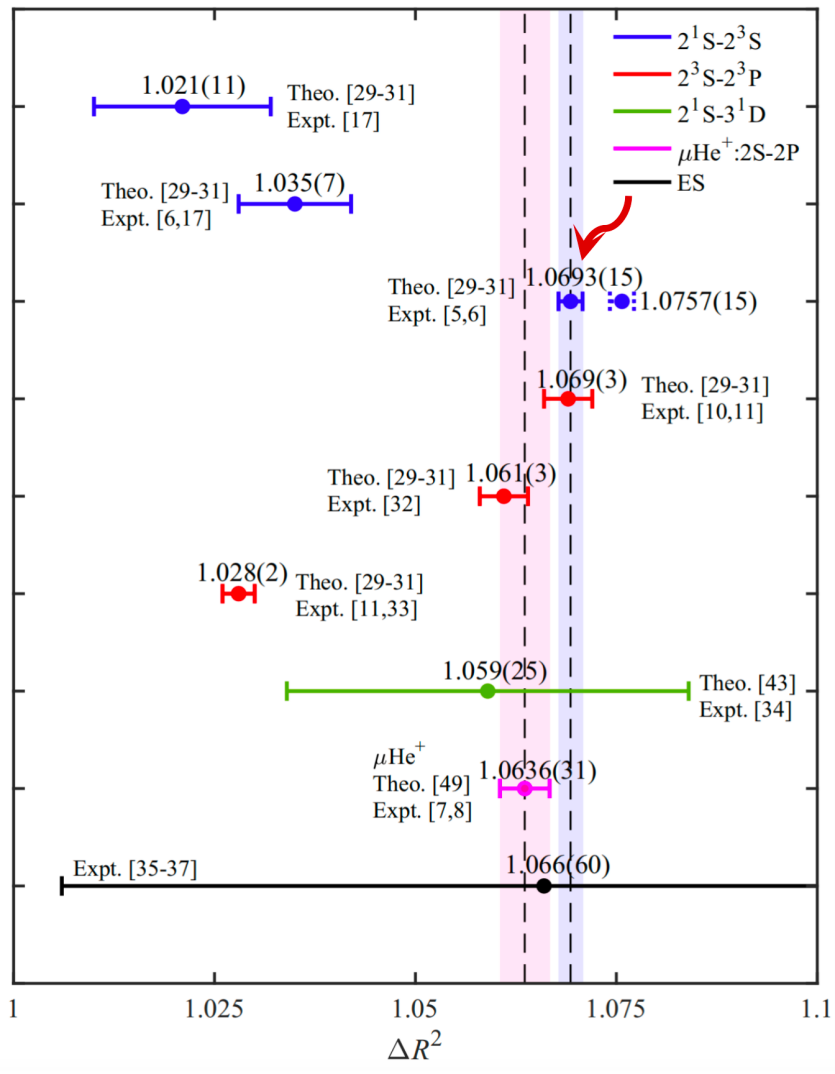Recently, the Atomic and Molecular External Field Theory Research Group at the Innovation Academy for Precision Measurement Science and Technology (APM), in collaboration with research institutions including the University of New Brunswick (Canada), Zhejiang Sci-Tech University, and Hainan University, has made significant advances in the study of helium isotope shifts, successfully resolving the existing discrepancy in the nuclear charge radii of He-3 and He-4.
The "proton radius puzzle" has perplexed the scientific community for nearly fifteen years, arising from a significant discrepancy between the proton charge radius determined via spectroscopic measurements of regular hydrogen and that obtained from muonic hydrogen. In recent years, the divergence among hydrogen spectroscopy results has widened, with the underlying cause remaining unresolved. A similar challenge has also emerged in helium, where conflicting measurements of nuclear charge radii of He-3 and He-4 present a similar puzzle.

Diagram illustrating the difference in the squared nuclear charge radii between helium-3 and helium-4, with the arrow indicating the result obtained in this study
To address this challenge, the Atomic and Molecular External Field Theory Research Group at APM, together with its collaborators, identified a critical mixing effect between singlet and triplet states in the hyperfine structure of helium-3. This previously overlooked effect was found to be the key factor underlying the discrepancy observed in experimental measurements. By accounting for this mixing, the study not only resolves the inconsistency in the determination of helium nuclear charge radii, but also strengthens the reliability of existing theoretical frameworks for both electronic and muonic atoms. Furthermore, the findings provide strong evidence in support of lepton universality within the Standard Model, establishing a solid theoretical foundation for future high-precision tests of quantum electrodynamics (QED) and the search for new physics.
The research findings have been published as a Letter in Physical Review Research. The first author of the paper is Dr. QI Xiaoqiu, a former Ph.D. student at APM. The corresponding authors are Dr. SHI Tingyun, a Research Fellow at APM, and Professor ZHONG Zhenxiang from Hainan University.
This work was supported by grants from the National Natural Science Foundation of China and the Science Foundation of Zhejiang Sci-Tech University.
Link to the article: https://journals.aps.org/prresearch/abstract/10.1103/PhysRevResearch.7.L022020
